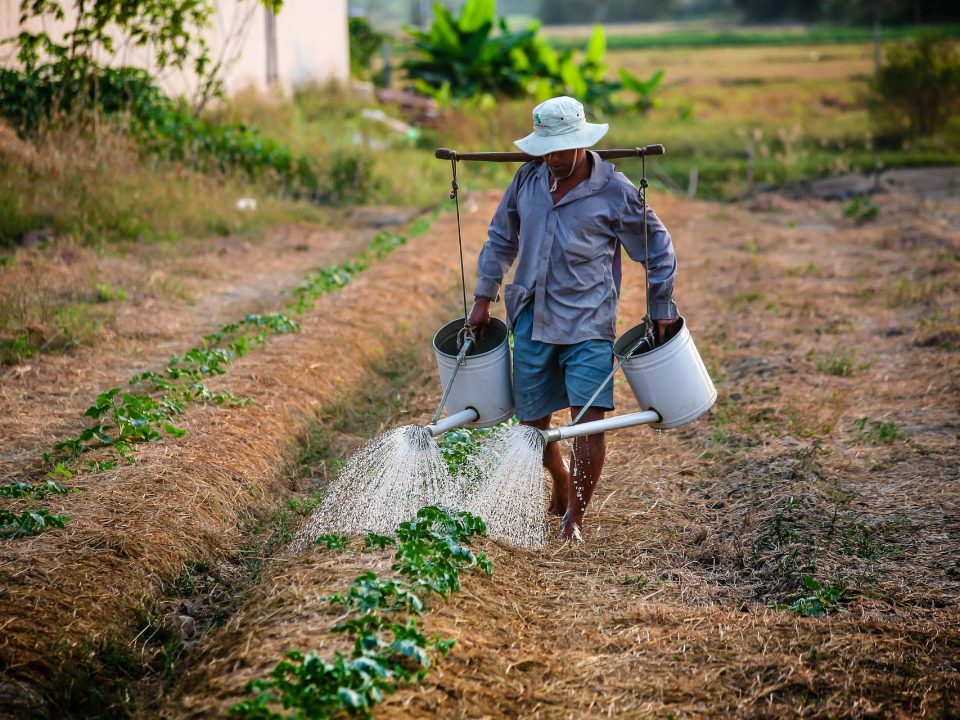Natural Pesticides

Life changing Herbs
November 22, 2018
Why Compost?
December 2, 2018How to fight pests in the garden Without poisoning yourself ?
Written by Ronen Kozushner, Natural Green Seeds. orseedscom
Making the home garden organic – without the use of pesticides and chemicals.
The products currently available to the insect enthusiast to treat pests often include various chemicals. These materials do solve the problem, but are harmful to the environment over time. Exposure of household members, neighbors and pets to substances, their absorption into the fruit and spices in the garden, their long-term inefficiency and damage to water and soil are some of the phenomena that occur after frequent use of chemicals.
In recent years there has been growing interest in creating a cleaner environment for future generations. The move began with the organic growth of agricultural produce, continued with a growing demand from consumers for a toxic product and reached the garden with a desire to maintain a clean living environment. Today, the market offers various green solutions that can prevent many damage to the garden. These solutions include spraying of various plant extracts, the use of traps and various withdrawals, adjustment of crops by seasons, the use of parasites and beneficial insects, and the use of materials absorbed through roots instead of in the air.
Pest control of the garden while reducing the use of toxins
How the protective materials work in plants
- 1. Plants repelling insects: are produced from strong essential oils of plants with a strong smell – garlic, onion, chamomile, tomato branches
. .Insecticide: Antiseptic, such as onion, garlic, nasturtium, chamomile, various sage2
. 3.Mushroom inhibitors: Truly cruciferous plants, containing mustard oil and sulfur. They include mustard, horseradish, as well as flowers of chamomile.
. 4.Poisonous Pests: Extracts from plants such as chrysanthemums are called Pyrethroids. The poison produced is a contact poison that also harms insects.
. 5.Strengthening and stiffening of plant tissues: Nectar or tuber extract rich in silicon. The material penetrates through the leaves to the roots. Strengthens the plant against the penetration of rodent fungi and insects.
Green pest control:
birds
Covering nets against birds, hanging aluminum foil / CD disc, hanging aluminum strips with hologram, scarecrow
Ants
. 1.Find the hole of their nest, a few drops of rosemary oil extract into the hole of the small ant at home
. 2.Spreading white chalk around windows and doors and spreading black pepper – clear boundaries and marking the territory
. 3.The nest bag and its surroundings are much more soda. Dissolving the material creates carbon dioxide that chokes the ant
Destruction of larvae
Concentrate with hot pepper
Materials needed
1 small pot, 1 unpeeled onion, 1 unpeeled garlic head, 1 tablespoon of hot pepper, a little oil-based soap, 1.5 liters of water
Instructions
Grind the garlic and onion and transfer to a small pot with the rest of the ingredients and cook for 20 minutes. Cool, filter and keep in jars in the refrigerator for 6 weeks
How to apply
Add one tablespoon of concentrate to 0.5 liters of water and spray.
Aphids
- The Seven-spot ladybird: Eat about 30 aphids a day.
- Birds: eat 0.5 kg aphids per year
third. Plant Solutions:
. 1.Blend tobacco from two cigarettes into 1 liter of alcohol + 2 liters of water
. 2.Boiling 2 cigarettes in a liter of water. Cool the mixture, add some liquid soap and spray liquid.
Powdery mildew and other leaf mushrooms
. 1.Flat tablespoon baking soda in a liter of water. Spray while wetting all infected leaves. Repeat once every 4-5 days until the touches are finished. You can also use milk. The control is achieved by changing acidity on the surface of the leaf.
. 2.Melt in a liter of water a tablespoon of baking soda, put in a sprayer and spray on all foliage for several days.
. 3.Spray also with baking soda at a concentration of 0.5% plus dish soap
– Soil fungi: cladding with black nylon sheet – solar disinfection
Slugs and snails
. 1.Distribution of coarse salt in the area of activity
. 2.A trap from a glass at ground level filled with beer
. 3.Dissolve ground black coffee
. 4.Dissolving wood ash around the plants
. .Natural enemies: hedgehog, frogs5,
. 6.Rejection by planting mustard, sage, thyme
. 7.Attraction by planting a monk’s hat
Weeding control
. 1.contact pesticide: bottle of vinegar 1 tablespoon salt + tablespoon of salt to the dishwasher. Spray on weeds. Neighboring plants can be protected with cardboard that will cover nearby plants.
. 2.Plants that prevent germination: Plants of the lipid family (mint, zuta, Melissa, thyme, thyme and cactus) have the advantage of preventing germination of other plants in their immediate vicinity. Should be planted in the garden to reduce the number of weeds and enrich the soil.
What Do we do when all this does not work?
. 3.Preparation of extracts from the above and other plants such as syrup and tobacco leaves Extraction preparation:
- pour boiling water on the leaves of the selected plant or boil the crushed branches
- After the water cooled: spray on the plants. It is recommended to use garlic extract and tobacco leaves.
Ordering beneficial insects
. 1.Creating a small water tank containing water plants – attracting various insects and animals – dragonflies, toads, hedgehogs and birds, which feed on harmful insects.
. 2.Plant yellow flowers – anemones, bulbs, wildflowers or garlic flowers – attract friendly insects, such as the Seven-spot ladybird and the Mantis, who will prey the pests.
Characteristics of the Green Garden
- Use of water-saving plants
- Use of plants resistant to pests and diseases
- Use of insects and useful factors – maintaining balance.
- Combining various artificial elements
- Reduction in the use of large water consumers
- Creation of organic fertilizer – home compost – and its use in the garden
- Effective water use
- Inserting different motifs of water – pulling butterflies and birds
- The use of various soil coverings – tuff, pebbles, jugs






